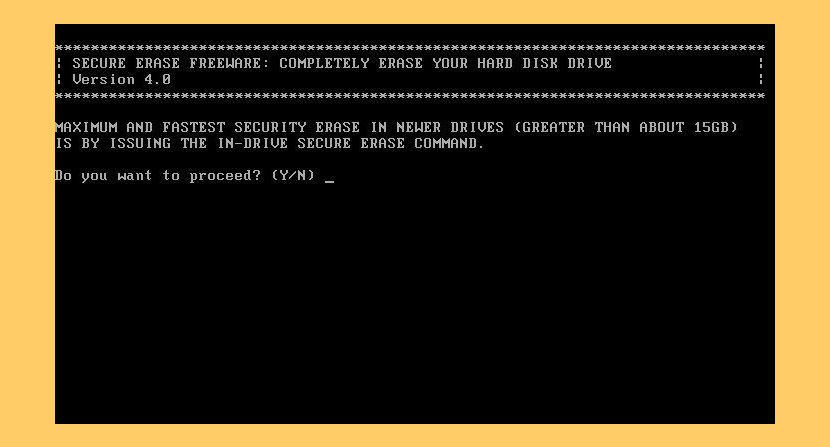
- #Security tab ocz ssd utility how to
- #Security tab ocz ssd utility windows 10
- #Security tab ocz ssd utility software
- #Security tab ocz ssd utility password
- #Security tab ocz ssd utility iso
I tried a number of programs to make it a bootable USB and they all failed to provide me with a working bootable USB. I then tried HDDErase but that program is quite old and I couldn't find a way to write it to a USB drive and have it work.
#Security tab ocz ssd utility how to
I could have tried another linux distro but that would have involved me learning from scratch how to install hdparm to it and making it a bootable image so I could run it from a USB drive. I simply couldn't find a workaround for this (I have a feeling the linux bootable I was using - was the issue) so I gave up. It gave me two errors: "invalid number 'ser-master'" and "invalid option -". However, when I attempted step 2a from this tutorial page linked by jbi I simply couldn't get the command to be recognized. I did manage to unfreeze the drives using the hotplug thing you mentioned when I attempted to use hdparm program in the linux bootable I downloaded. In response to Klyith, I'm aware of the reasoning behind the drive freezing.
#Security tab ocz ssd utility software
I was able to use the Crucial provided software to secure erase my BX100 and that fixed the performance on that one as well. Seems that the secure erase I performed using Parted Magic worked and my PNY SSD is running like normal again. But for anyone that wants a free option and is more comfortable with DOS than linux, it's there. I don't have a scratch SSD around to test that out at the moment. I think you'd still need to make a bootable DOS CD or USB stick, but maybe it would work from an elevated prompt on a non-OS disk. So some of what you paid parted magic for is whatever special sauce they use to unlock the drive and do everything for you.įYI to anyone else looking for ATA Secure Erase, there's also a DOS tool called HDDErase that can do it. Even the manufacturer supplied drive utilities often have problems with this. You have to jump through hoops to get around it, either using a USB enclosure or setting sata to hotswap and not plugging in the drive until after boot.
#Security tab ocz ssd utility password
They do that to prevent malware from setting your drive to password encrypted and ransoming the key for bitcoins. Probably what happened: modern BIOS/UEFI puts drives into a "security frozen" state during boot, which locks out ATA security features (including erase and drive encryption). I'm really pissed it came to me buying software that used to be free to fix a problem that should have been solvable from the manufacturer, but the program worked without issue. I tried a few other free options and after hours of nothing really working I ended up caving and bought Parted Magic for 11 bucks. Found a workaround but then I couldn't get the commands found on part 2a in post #2 from jbi to work. I could get it to run, then I had problems with my SSD's being frozen.
#Security tab ocz ssd utility iso
Found a bootable linux ISO that already had hdpart installed on it.

Well, I tried the ATA Secure erase and it didn't work out. I don't understand why it's so difficult to find an easy way to secure erase an SSD without using a program provided by a manufacturer. I hate messing with Linux though because I find it frustrating and confusing, but I think I can manage. I'll look into the ATA Secure Erase thing. I have an old OCZ Vertex 4 that became slow after a few years of too much stored on it from time to time and used the OCZ Toolbox program to secure erase it which brought it's performance back completely, so a secure erase is something I want to do on this PNY. I'm not sure why TRIM wouldn't be enabled as I was previously running the drive on Win 7 and now 10. I did the fresh install of Windows after removing the drive, putting it in another computer, and using the diskpart clean command.
#Security tab ocz ssd utility windows 10
The drive is currently 179GB free of 222 GB after a fresh install of Windows 10 and nothing else.


If the drive supports "ATA Secure Erase" (AFAIK all modern SATA SSDs do), and you're willing to boot a Linux live image, there's a way to do it from the command line: If all you really care about is fixing the performance issues, just making sure TRIM is enabled and freeing up some space (in that order) would likely get you most of the way there.


 0 kommentar(er)
0 kommentar(er)
